test-blog
Georgia Farm Bureau marks 85 years of representing farmers
Posted on May 31, 2022 12:00 AM
By Jennifer Whittaker, Georgia Farm Bureau
1937 was an eventful year. Amelia Earhart vanished. The World’s Fair, held in New York, introduced television to America. The U.S. government issued its first social security checks. The U.S. Steel Corporation raised workers’ wages to $5 a day.
Three months after organized steel workers got their raise, farmers from seven Northwest Georgia counties met at the Bartow County courthouse on June 17, 1937, to discuss forming an organization to represent them called the United Georgia Farmers (UGF). Bartow County farmer Robert M. Stiles organized this meeting attended by farmers from Bartow, Cherokee, Cobb, Gordon, Floyd, Polk and Paulding counties.
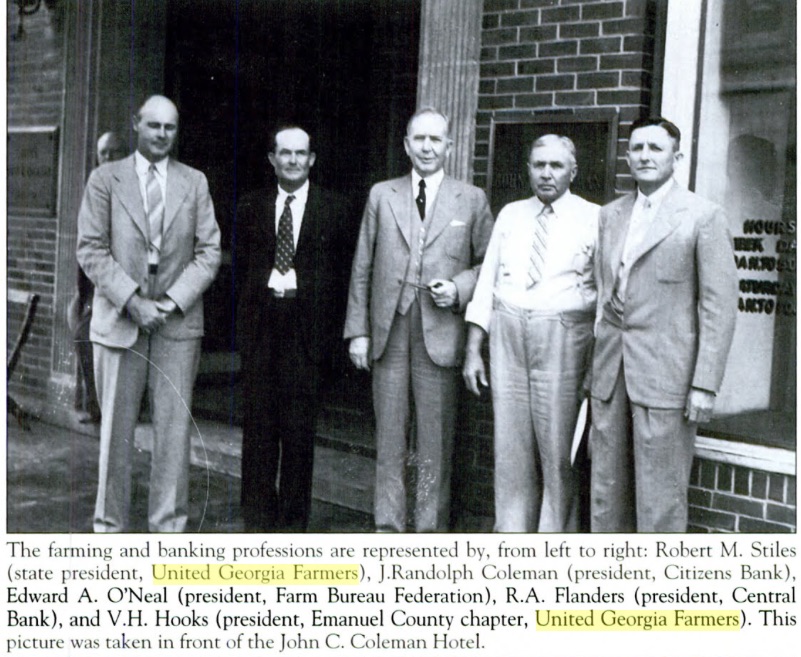
An editorial from Country Home Magazine reprinted in the second UGF newsletter, weeks after the June 17 meeting, shows how the steel workers’ success inspired Georgia farmers to unite: “Farmers have watched the tactics of organized labor this year with personal interest. They have seen the unions win wage increases. Greater incomes for the workers may mean improved demand for farm products and may mean higher prices for the things farmers must have. Farmers find themselves wondering about their own power in bargaining matters.”
A second meeting, attended by 50 farmers from 25 counties across Georgia, was held at the Ansley Hotel in Atlanta on July 31, 1937. During this meeting, the farmers officially formed the UGF and elected Stiles president of the organization.
In 1939, the UGF affiliated with American Farm Bureau and in 1941 changed its name to the Georgia Farm Bureau (GFB) Federation.
Since 1937, Georgia Farm Bureau’s primary and ongoing goal has been to give farmers a united voice in the legislative arena, promote farm markets and provide leadership to Georgia’s agricultural community. Farm Bureau is a non-governmental, voluntary membership organization that is local, state, national and international in its scope and influence.
“Beginning with those first 50 farmers, Georgia Farm Bureau has been, and will continue to be, a grassroots organization that represents farmers in Atlanta and D.C. based on policy positions determined by our members,” said GFB President Tom McCall. “Through the years, Georgia Farm Bureau has grown as it started offering services and benefits requested by its members, such as insurance, but its core mission - to be the Voice of Georgia’s farmers - hasn’t changed.
GFB's Early years
GFB marks its anniversary date from 1937 because our organization has been in continuous operation since then, but the seeds for our current organization were planted years before.
According to “A History of Georgia Farm Bureau 1937-1987,” which the organization published in December 1987, there were some county farm groups across Georgia organized in the first decade of the 1900s that went by various names. These associations formed after the University of Georgia College of Agriculture was established in 1907 and the Georgia Extension Service program was created to offer educational programs to farmers on the county level.
Around 1910-11, Sears, Roebuck and Co., offered to give $1,000 to any county in the U.S. that wanted to hire a full-time farm demonstration/Extension agent. To qualify for the funds from Sears in conjunction with the United States Department of Agriculture, the county had to form a “Farm Bureau” organization of farmers that would also provide $1,000 annually to help support the agent.
In 1911, the Bibb County Agricultural Association changed its name to the Bibb County Farm Bureau to employ an Extension agent. BCFB was among the first county Farm Bureaus formed in the U.S. through this program. The first county farm bureau was formed in Broome County, New York, where the Binghamton Chamber of Commerce is credited with being the first to use the name “farm bureau” in 1910 for its department that dealt with farming interests.
By 1919 so many county “farm bureaus” were established across the U.S. through the Sears/USDA program that when a group of farmers met that year to form a new national organization they chose the name American Farm Bureau Federation (AFBF).
A Georgia Farm Bureau Federation was formed in 1920 that paid dues to AFBF until 1923. James Morton served as the first GFB president and was among AFBF’s first executive committee members. AFBF held its annual convention in Atlanta in 1921.
Georgia farmers’ enthusiasm for supporting the first GFB faded, most likely due to economic depressions in the 1920s and 1930s.
GFB’s rebirth & growth
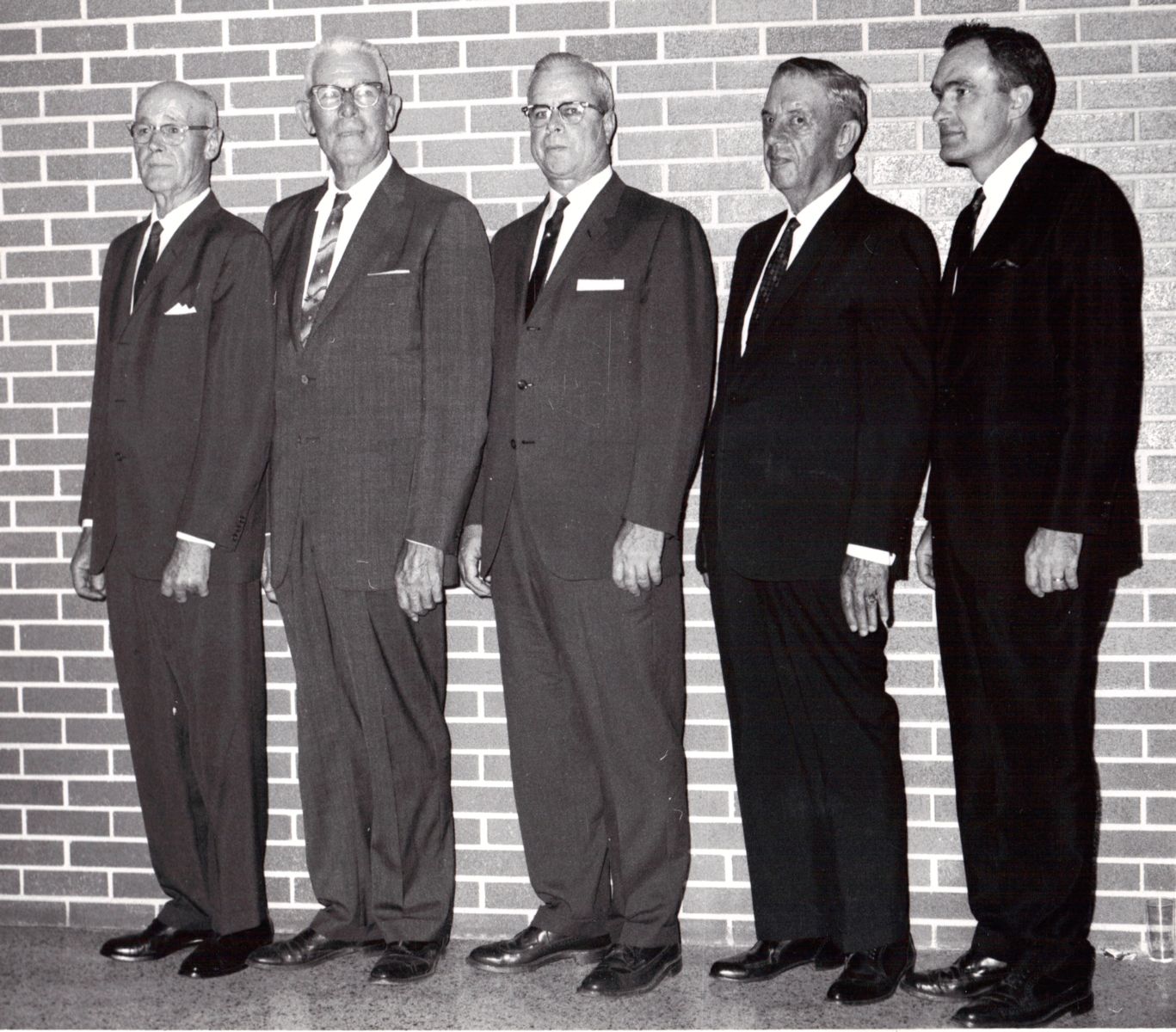
After the United Georgia Farmers changed its name to Georgia Farm Bureau and affiliated with AFBF in 1941, the organization took off. Most county Farm Bureau chapters were chartered in 1941 with a few as late as 1948.
GFB voting delegates elected Harry L. Wingate of Mitchell County to serve as its second president in July 1941. The GFB history book notes that Wingate, who was GFB’s first full-time paid employee, was able to fit all of the organization’s records and assets in the back of his car when he took office.
Under Wingate’s leadership, GFB membership grew from 1,313 in 1941 to 9,847 in 1942. At some point in 1942, Wingate and the GFB Board of Directors hired Katie Willingham Ward as GFB’s first full-time secretary/treasurer. In 1943, GFB hired Herbert Woodruff as director of the organization.
GFB hired its first two field representatives in 1947 as the organization continued to grow. These employees served as liaisons between the county chapters and the state organization. Today, GFB has a district federation manager for each of its 10 districts who continue to fill this role.
The Cooperative Extension Service played an important role in the early organization of GFB. The county Extension office often kept the county Farm Bureau’s records, and at times, the Extension secretary served as the county Farm Bureau secretary. It wasn’t until the GFB Mutual Insurance Company began operations in 1959 that every county was able to hire its own secretary.
As more county Farm Bureau chapters were organized across the state, GFB leaders decided to locate the organization’s headquarters to a central part of Georgia. GFB was previously headquartered in Style’s and Wingate’s hometowns of Cartersville and Pelham.
In 1944, the GFB home office moved into the B Suite in the Bibb Building in downtown Macon. In 1951, GFB headquarters transferred to a small building on New Street in downtown Macon. As GFB added more member programs and employees, GFB relocated its state office 10 years later to a building on Ingleside Avenue in Midtown Macon.
By the late 1960s, GFB was outgrowing the Ingleside office and GFB leaders started planning to build a modern, three-story office on Riverside Drive in a new shopping center located on what was then the expanding outskirts of Macon. On March 24, 1970, GFB broke ground on this building and moved into the 50,000 square foot building during the summer of 1971. This building still stands in a shopping center located at the corner of Riverside and Wimbish Road and is today occupied by Fickling & Company.
By 1983, GFB was beginning to outgrow the Riverside office, so, its board of directors began a study to look for property for a new building. After considering other sites along I-75 near the Riverside office, in 1986 the GFB Board of Directors approved buying a 15-acre tract on Bass Road in Northwest Bibb County to build the organization’s current state office.
Former GFB 4th District Director Marvin Ruark recalled serving on the GFB committee that studied the organization’s options for buying the land for its current Macon office.
“Buying this property and building this new building was a controversial issue,” Ruark said. “Many wanted to expand the existing office on Riverside. We had some growing pains, but I think we made the right decision.”
GFB held a groundbreaking ceremony for its new, five-story building on March 11, 1987, and GFB employees moved into the building in May 1988. GFB held a dedication ceremony in October 1988 for the new building attended by-then AFBF President Dean Kleckner.
When GFB moved to Bass Road, none of the current fast-food restaurants, banks, gas stations or shopping centers existed. The first new development in the area didn’t start until 1996 when the subdivision on Brookfield Drive off Bowman Road began, followed by Providence Subdivision in 2002. Growth on Bass Road really took off in 2006 when Bass Pro opened a distribution center in March 2006 followed by a store and outlet in October 2006. The March 2008 opening of The Shoppes at River Crossing on Riverside Drive, near the end of Bass Road, also contributed to the area’s growth.
Soon after GFB moved into its current state office, it began a campaign to help county Farm Bureaus do the same. From the late 1980s into the first decade of this century, the majority of the counties built new offices.
GFB's main mission
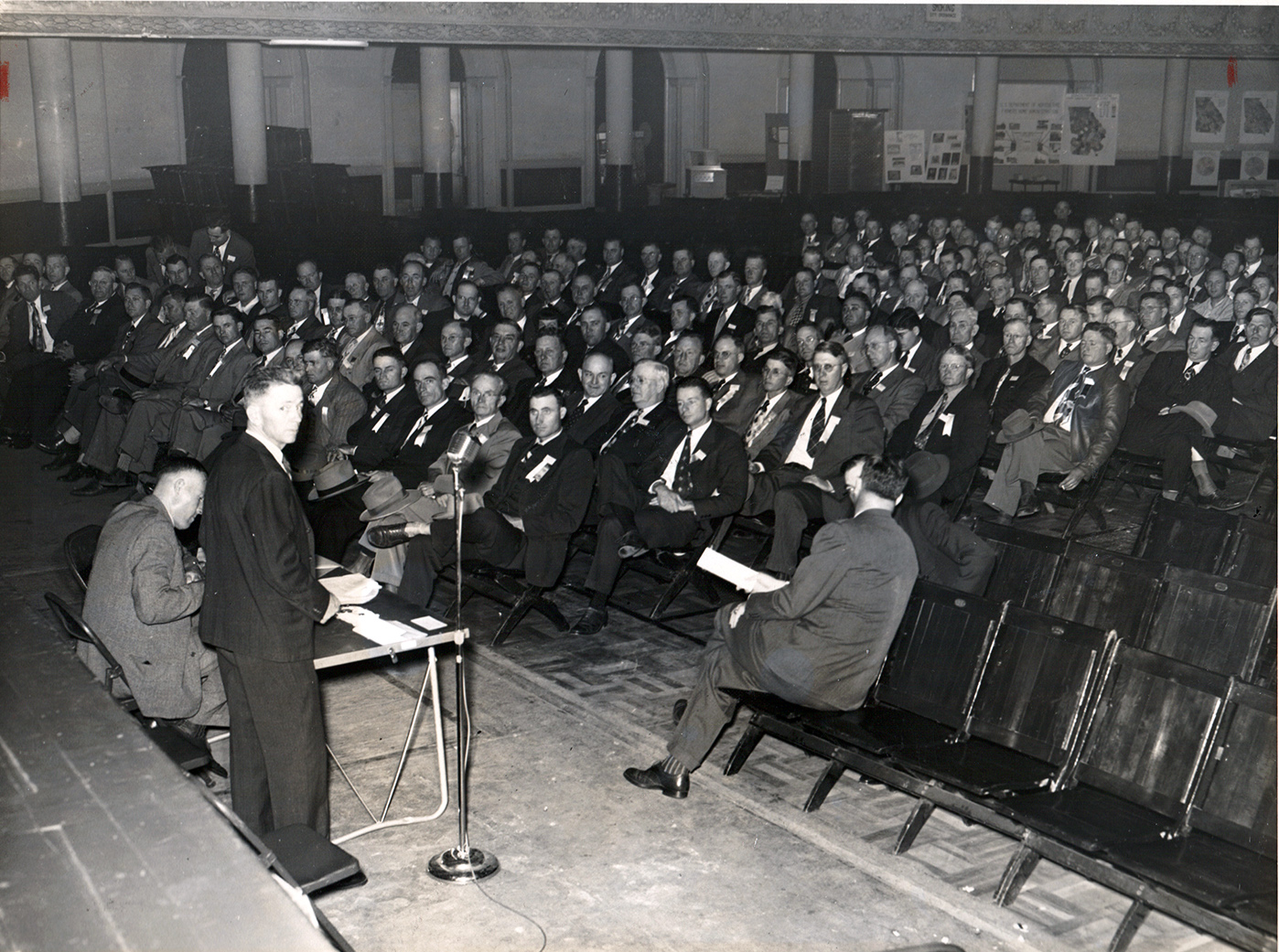
The heart of Farm Bureau’s member programs remains its legislative activities. GFB is issue-oriented in its approach to legislative activity. Farm Bureau helps farmers advocate for agriculture by coordinating events such as Farm Bureau Day at the Capitol in Atlanta, and annual trips to Washington, D.C., for county leaders and young farmers, that let them meet with their elected officials on Capitol Hill and see our government in action.
Serving as the Voice of Georgia farmers in the legislative arena has always been GFB’s main mission. The first issues GFB advocated for on behalf of Georgia’s farmers included expanding electricity across rural Georgia and improving farm-to-market roads.
Today, Farm Bureau continues to advocate for farmers on the county, state and national levels on issues including zoning, water, environmental regulations, labor, taxes and transportation. Every position that GFB takes on any issue is based on policy approved by Farm Bureau members during the organization’s annual policy development process.
Since the 1980s, GFB has organized an annual Farm Bureau Day at the Georgia Capitol giving Georgia farmers a chance to present a united front in Atlanta to remind the General Assembly of the importance of Georgia agriculture to the state’s economy. GFB also annually organizes trips for its county leaders to travel to Capitol Hill in Washington, D.C. to meet with Georgia’s U.S. delegation. County Farm Bureaus regularly host legislative breakfasts and dinners and farm tours to give local farmers a chance to meet with their elected officials.
In 2021 GFB’s voting delegates unanimously voted for the organization to establish the GFB Impact Fund, a political action committee (PAC) for the organization. The organization saw the need for a PAC as rural areas lose representation to metro areas. The Impact Fund is meant to be a tool to help GFB connect with non-farm legislators on both the state and national level, and with those who support farmers and believe in the future of Georgia agriculture.
GFB Women’s & YF&R Programs through the years
Farm Bureau has been a family organization for 85 years, and member programs such as the GFB Women’s Leadership Committee (WLC) and the GFB Young Farmers & Ranchers (YF&R) Program have offered leadership development opportunities and ways for all members of the family to get involved with the organization.
Today, both programs have a state committee. The WLC consists of a representative from each of GFB’s 10 districts and the YF&R Committee has a representative or representative couple from each GFB district. Every year each committee nominates a member to serve as its chairman the next year; both chairmen serve a one-year term on the GFB Board of Directors. These committees coordinate numerous statewide activities designed to help county WLC Committees and YF&R Committees promote agriculture in their local communities.
GFB thanks the ladies and gentlemen who have volunteered their time to serve on both committees through the years.
To see a list of GFB Women’s Committee Chairmen through the years visit www.gfb.ag/wlcchairmen
To see a list of GFB YF&R Committee Chairmen through the years visit www.gfb.ag/yfrchairmen
Ladies First
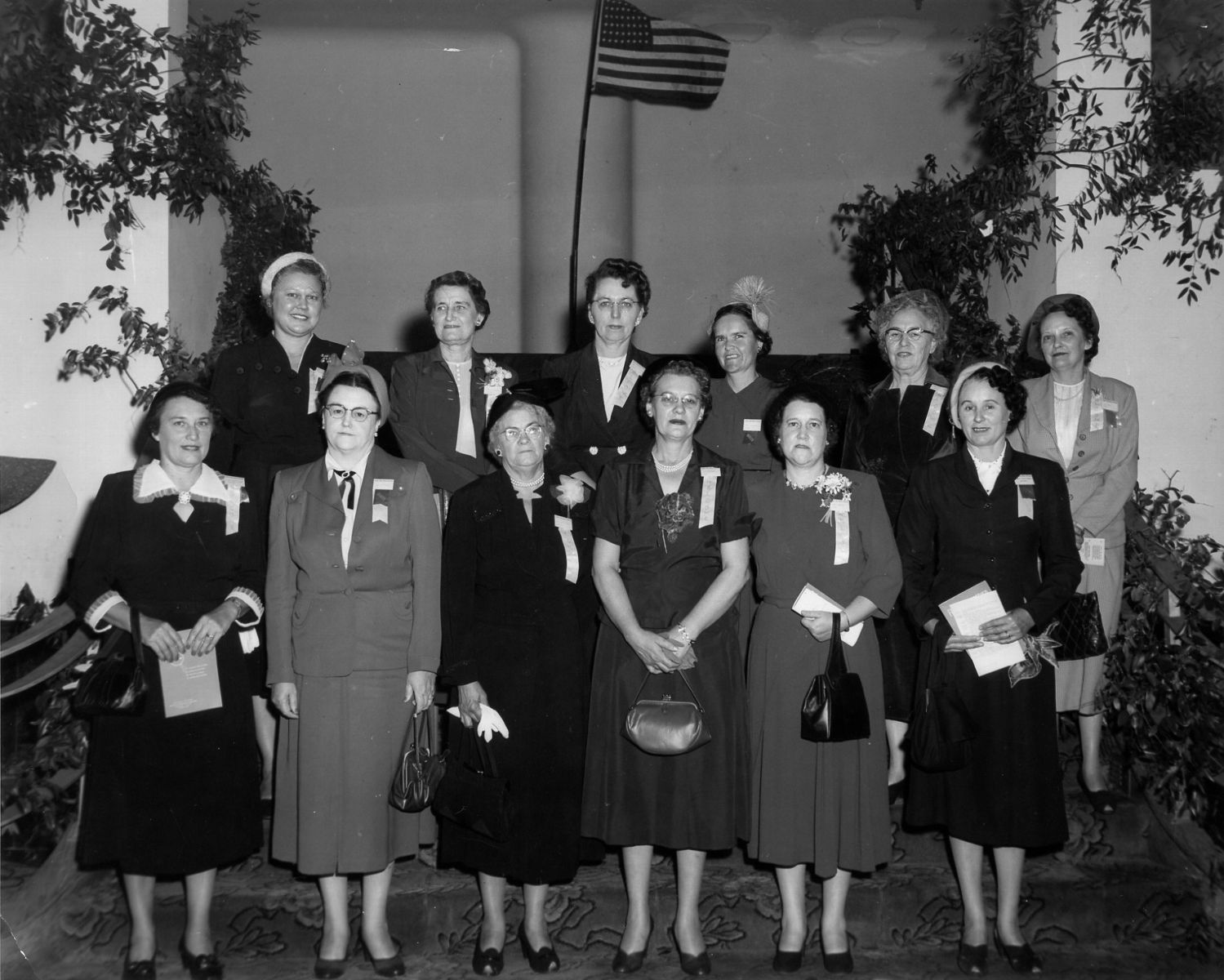
In 1944 the women involved with GFB organized an auxiliary called the Georgia Farm Bureau Associated Women. Mrs. Geraldine (Joe S.) Ray of Coffee County was elected as president of the group and served as an ex-officio member of the GFB Board of Directors. In 1955 the GFB Associated Women reorganized as the GFB Women’s Committee and became more involved in Farm Bureau activities.
In 1959, the GFB Board of Directors authorized the Women’s Committee to establish a scholarship program for students planning to pursue a career in agriculture, and the first scholarship was awarded that year. The GFB Mutual Insurance Company, which began operating Jan. 2, 1959, funded these scholarships and the Women’s Committee supported the program through 2015 when the Georgia Foundation for Agriculture was established. The foundation assumed responsibility for raising funds for the scholarships and coordinating the program in 2016.
The Women’s Committee has worked to promote Georgia commodities in numerous ways through the years. For many years, the Women’s Committee promoted Georgia agriculture by spotlighting Georgia commodities through recipe contests, such as the June Dairy Dessert Recipe Contest, held from 1971 to 1986 that evolved into a Dairy Recipe Contest from 1987 through 1991.
After the former GFB Commodities Department was formed in 1974, the Women’s Committee worked with the department to highlight a different Georgia commodity each year. Longtime GFB members probably have a collection of lapel pins dating back to at least the 1980s to mid-2000s featuring a variety of Georgia commodities including apples, bees, beef cattle, blueberries, corn, cotton, dairy, fish, hay, horses, peaches, pecans, peanuts, poultry, soybeans, swine, tobacco and vegetables.
In the early 1980s, the U.S. Department of Agriculture (USDA) and American Farm Bureau Federation led a national effort to develop the National Agriculture in the Classroom organization. Georgia Farm Bureau accepted responsibility for the Ag in the Classroom program (AITC) for Georgia, and in 1986 hired Donna Hellwig Rocker to coordinate the AITC program in Georgia, a position she held until her retirement in 2018. Both the GFB and county Farm Bureau Women’s Committee volunteers continue to make taking AITC curriculum into schools a priority.
Bertie Mae McDonald of Washington County, who chaired the GFB Women’s Committee from 1981-1986, became the first GFB member to serve on the AFBF Women’s Committee in 1984. McDonald represented AFBF’s Southern Region on the national committee through the 1990 AFBF convention. She also served a two-year term on the GFB Board of Directors from 1988-1990. Peggy Smith of Turner County, who chaired the GFB Women’s Committee in 1993 and again in 2001, served a one-year term on the AFBF Women’s Committee in 2001 as the AFBF Southern Region representative.
Archived issues of the GFB News show that Georgia Farm Bureau held a statewide essay contest for middle school students from at least as early as 1977 through 2021. The GFB Young Farmer Committee coordinated a contest for seventh graders through at least 1997. At some point the contest was transferred to the women’s committee.
For more than 20 years, the contest was for seventh graders but later expanded to include sixth through eighth-grade students. Essay topics ranged from “Why Agriculture is Important to Me,” to the importance of a healthy diet, how farmers protect natural resources, or the economic contributions agriculture make to Georgia’s economy. With students being drawn to learning more visually, GFB held a bookmark design contest for middle schoolers in 2022.
The Women’s Committee began sponsoring a statewide art contest for high school students in 1995 that asked students to draw sketches depicting some aspect of Georgia agriculture. For many years the sketches of the 10 district winners and two honorable mention winners were featured in a calendar and then on notecards. Both contests gave county Farm Bureaus a way to connect with local teachers to encourage them to incorporate agriculture as a topic in their curriculum and to connect students to the farmers who grow their food.
Since 2014, the committee has been known as the GFB Women’s Leadership Committee after the GFB Board of Directors approved adding the word leadership to the committee’s name in the fall of 2013 in recognition of the leadership roles women have on the county and state level in organizing Farm Bureau activities. The WLC is placing an increased emphasis on preparing the organization’s female volunteers to serve as county vice presidents and presidents and to reach out to their elected officials to advocate for agriculture.
Throughout GFB’s history, the organization has held conferences in addition to its annual convention designed to encourage its farm members, offer leadership training and fellowship. These conferences have gone by variety of names: farm family, women’s conferences or leadership conferences.
In the 1990s, GFB began offering a Women’s Leadership Conference to equip women’s committee members to visit their local schools using AITC activities and curriculum. This gradually morphed into the Leadership & Education Conference as more county Farm Bureaus began inviting local teachers whose classes they visited.
Recruiting Young Farmers & Ranchers
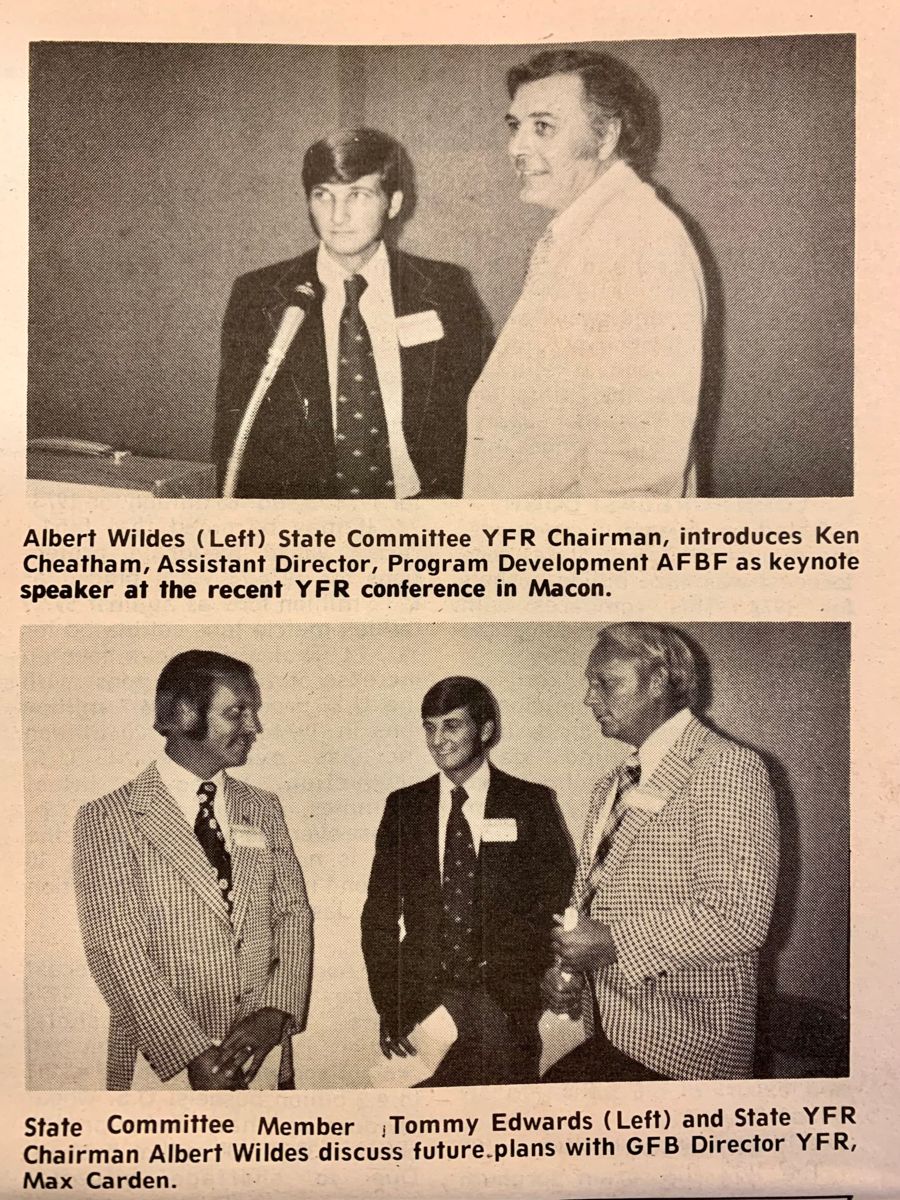
The American Farm Bureau Federation began its Young Farmers & Ranchers Program in 1967, and Georgia Farm Bureau followed suit in 1972. AFBF and GFB created their programs to recruit and develop future Farm Bureau leaders and to encourage young people starting out in farming.
According to GFB records, the program was originally for farmers between the ages of 21 and 30. Through the years, the program broadened its scope and now welcomes GFB members ages 18 through 35 who farm or work in an ag-related profession.
In the early years of its YF&R program, AFBF began offering a national Outstanding Young Farmer Award to three recipients nationwide to recognize young farmers or couples for their farm operation, achievements in agriculture and community service. GFB records show that in 1972 Bill & Annette Smith of Bulloch County were the first to receive the GFB Outstanding Young Farmer Award. The Smiths went on to receive the AFBF Outstanding Young Farmer Award at the 1973 AFBF convention. The award was renamed the AFBF Young farmers & Ranchers Achievement Award around 1990.
Between 1973 and 1986, eight Georgia farm couples won the AFBF Young Farmers & Ranchers Achievement Award. These couples are: (each couple won the GFB award in the first year listed followed by the AFBF award in the second year) Bill & Annette Smith of Bulloch County (1972/1973); Larry & Phyllis Tucker of Lee County (1973/1974); Wesley & Angie Kaylor of Lee County (1974/1975); David & Patricia Graham of Laurens County (1976/1977); Ken & Mona Howard of Morgan County (1979/1980); Anthony & Linda Everett (1980/1981); Zippy & Bonnie Duvall of Greene County (1982/1983); and Jim & Patti Reid of Sumter County (1985/1986). In most of these years, AFBF named three national winners to represent different regions of the country.
Farm Bureau records show that from 1995 forward AFBF awarded one national achievement winner and gave prizes to the top four or five contestants from the Top 10 finalists. GFB members who finished in the top four of the AFBF YF&R Achievement competition include: Parks & Maridel Callan of Miller County (1977/1978); David & Shirley Jarriel of Tattnall County (2001/2002); Chad & Julie Carlton of Polk County (2011/2012); and Jacob & Emily Nolan of Wayne County (2020/2021) second place winners.
To see a list of all GFB Young Farmers & Ranchers Achievement Award winners from 1972 to 2021 visit www.gfb.ag/achievementwinners .
At some point in the 1970s, AFBF began offering a “Talk Meet” competition for young farmers at its annual convention. The event was renamed the “Discussion Meet” by 1976 when GFB held its first discussion meet at its annual convention. This event is intended to help younger Farm Bureau members develop public speaking skills and to feel more comfortable speaking up for agriculture at local government meetings. The event is not intended to be a debate but rather a conversation between participants seeking to find a solution to a current agricultural issue that needs to be resolved.
Barry Cronic of Jackson County not only won the 1976 GFB Discussion Meet, but he also won the 1978 GFB Discussion Meet and was a Top 4 runner-up in the 1979 AFBF contest. GFB’s 1979 Discussion Meet winner – Steve Wilson of Henry County – went on to win the 1980 AFBF Discussion Meet.
Joining Wilson in the winners’ circle at the 1980 AFBF convention were Ken & Mona Howard, of Morgan County, who received the AFBF Outstanding Farmer Award. GFB News archives note this was the first time that a state Farm Bureau had winners for both national contests.
Georgia hasn’t had a national discussion meet winner since Wilson in 1980, but besides Cronic, GFB has had six additional contestants place in the Top Four final round: Greg Ison, Spalding County (AFBF 2001); Pam Williams, Appling County (AFBF 2002); Joel McKie, Wilcox County (AFBF 2005); Chad Carlton, Polk County (AFBF 2008); Skye Gess (AFBF 2017); and Becca Creasy, Bulloch County (AFBF 2019). Numerous GFB contestants have reached the third round of competition known as the Sweet 16 through the years.
Visit www.gfb.ag/dmwinners to see a list of all GFB Young Farmers & Ranchers Discussion Meet winners from 1976 to 2021.
Today when discussion meet contestants enter the competition, they are given a list of five issues agriculture is currently facing so they can research the topics before the contest. On the day of the GFB or AFBF competition, contestants are informed which topic they will discuss at the start of each round of the discussion meet. The top four contestants compete for first place honors on a second day of competition.
AFBF held its first YFR Excellence in Agriculture competition at its 2003 annual convention. GFB held its first competition for the Excellence in Agriculture Award at its 2013 YF&R Summer Leadership Conference. This award is designed to recognize young professionals who work in agriculture in some capacity other than farming fulltime and actively volunteer and/or advocate for agriculture in their communities and/or on the state level. Clay Talton, then an Extension agent in Elbert County, won the 2013 award. In the past nine years, GFB contestants have placed in the Top 10 for the AFBF award five times. GFB’s 2018 winner, Caroline Lewallen, won third place in the 2019 AFBF event while representing Hall County. Jessica Lance, of Morgan County, came in fourth at the 2022 AFBF convention.
Visit www.gfb.ag/excellencewinners for the list of all GFB YF&R Excellence in Agriculture Award winners.
Since the first GFB YF&R Committee was appointed in 1973, GFB has had a YF&R Committee made up of young farmers or farm couples representing each of GFB’s districts. Albert Wildes of Jeff Davis County served as the first committee chairman in 1973. GFB voting delegates amended the organization’s by-laws at the 1973 convention so that the YF&R Committee serve on the GFB Board of Directors as an ex-officio member during the duration of his time as committee chairman. GFB Women’s Committee chairmen have served as an ex-officio member of the GFB Board since 1945.
To see a list of GFB YF&R Committee Chairmen through the years visit www.gfb.ag/yfrchairmen
At least ten of GFB's YF&R Committee chairmen have gone on to serve on the AFBF YF&R Committee: Mack Crawford, Pike County (1981&82); Zippy & Bonnie Duvall, Greene County (1986 & 87); Teel & Jeanie Warbington, Dooly County (1991&1992); Terry & Cindy England, Barrow County, (1994 &1995); Michael Williams, Bleckley County (2002-2003) Ben Boyd, Screven County (2004 & 05); Leighton & Brenda Cooley, Crawford County (2009 &10); Jake & Jennifer Carter, Henry County (2013 &14); Matthew & Kimberly London, White County (2017&18) and Ben Cagle, Cherokee County (2020 & 21). Three of them – Zippy Duvall, Ben Boyd and Jake Carter chaired the AFBF committee during the second year of their term.
From the late 1970s until 2010, the GFB Young Farmer Committee hosted an annual three-day farm tour for GFB members. The tours, held in June or July, rotated each year to a different GFB district highlighting farms and agribusinesses in the district. The GFB YFR Committee stopped hosting the tour in 2010 so it could give full attention to the annual YF&R summer leadership conference it began holding that summer. The summer conference allows GFB to reach more young farmers.
GFB has held Young Farmer conferences since the 1970s, but the format of GFB’s current three-day Summer Leadership Conference that’s been held on Jekyll Island since 2012, took root in 2010 when GFB held it’s first “destination” conference at Lake Blackshear followed by Callaway Gardens in 2011.
GFB’s Young Farmer Program started its annual Harvest for All Campaign in 2004. County Farm Bureaus were asked to collect staple pantry items that were donated to food banks across the state through 2009. During these six years, the committee collected about 49,000 pounds of staple food items. In 2005, GFB donated the 17,000 pounds of food Farm Bureau members collected to victims of Hurricane Katrina in Hancock County, Mississippi, one of that state’s areas hit hard by the historic storm.
Since 2010, Farm Bureau switched to making cash donations upon the request of the GFBA because food banks on average can provide four meals for every dollar they receive. The GFB YF&R Committee has annually asked county Farm Bureaus to make a cash donation to the Georgia Food Bank Association (GFBA). Georgia Farm Bureau also contributes to the collective donation presented at the annual GFB convention. Since 2010, GFB and the county Farm Bureaus have donated more than $260,000 to the GFBA.
GFB offered its first Young Farmers to Washington trip in 1983 to introduce beginning farmers to how Capitol Hill functions and how Farm Bureau advocates for farmers on the national level. In the early years the groups traveled to D.C. by bus instead of flying. GFB took its 38th group of young farmers to D. C. in 2020 right before the COVID – 19 pandemic erupted in mid-March of that year. High numbers of COVID cases in the winter of 2021 and 2022 prompted Congress to close Congressional offices to outside visitors preventing GFB from offering the trip.
Going to market
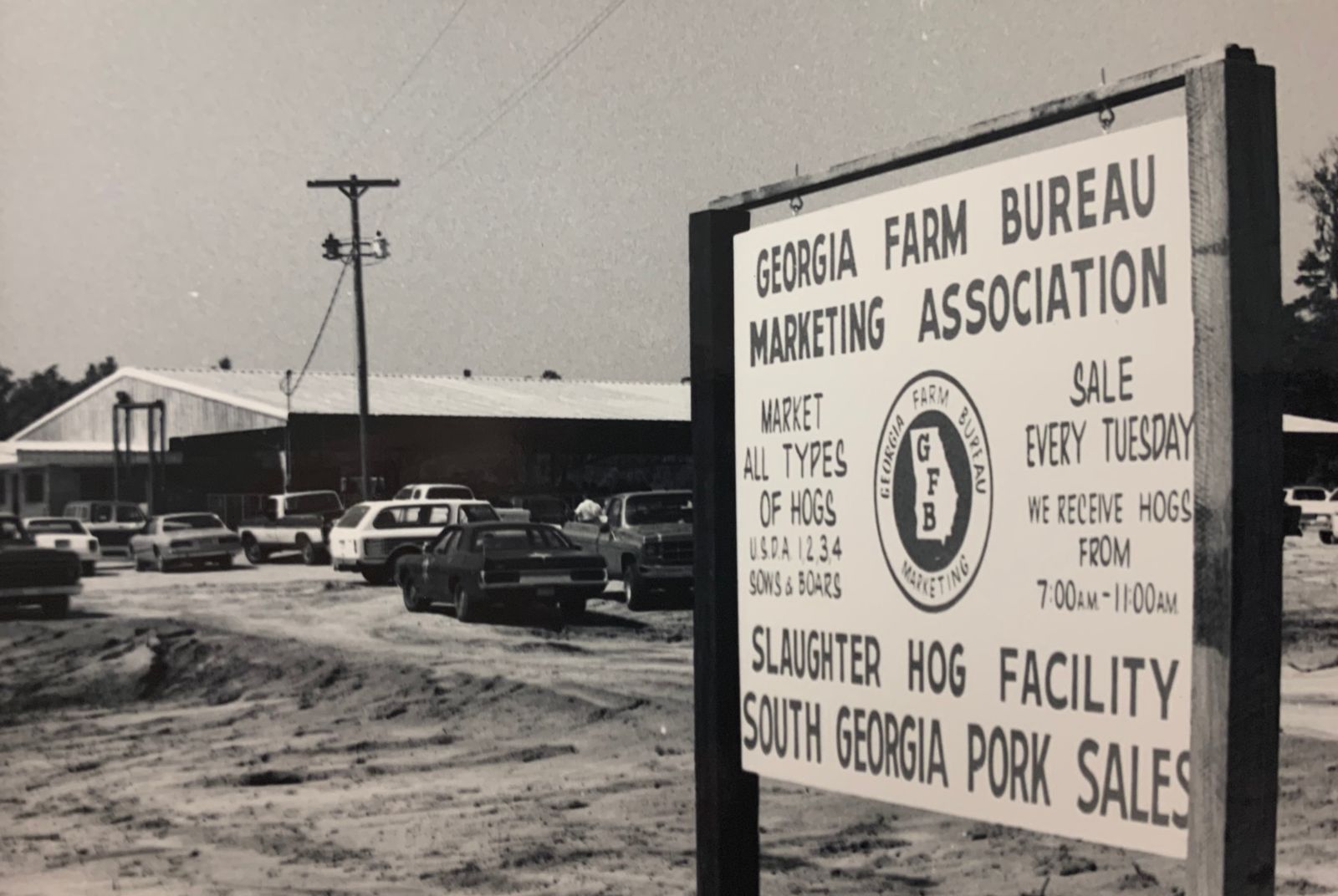
Through the years, Farm Bureau has implemented numerous programs for Georgia’s farmers. These include commodity programs that help farmers sell their crops, buy ag products and address issues pertinent to their commodities.
GFB formed its marketing association in 1964 to engage in activities connected with the marketing, selling, harvesting, preserving, drying, processing, ginning, packing, canning, storing, handling or utilizing of any ag products produced by members of the GFB Marketing Association. The association also sold tires to GFB members at reduced prices. In 1971 the marketing association began a livestock marketing program to sell fowl and hogs. In 1972 the livestock program expanded into dairy replacement heifers.
The GFB Commodities Department was formed in 1974 to coordinate communication among Farm Bureau members regarding issues affecting the crops and livestock they produce and to serve as a liaison with the commodity organizations that represent those crops and/or to work on the behalf of those crops that don’t have a state commodity commission or producer organization. Through the years GFB created commodity advisory committees for specific crops grown in Georgia as needed for farmers to have an avenue for discussing issues affecting their farms and work with GFB to address the issues. Today, GFB has 20 commodity advisory committees for the major crops and livestock produced in Georgia and a committee to address water issues.
The marketing association and commodities departments eventually merged. As farmers’ need for the marketing services GFB offered declined, the organization eventually phased out its livestock marketing services by the mid-1990s and its last grain marketing service in 2017. That year GFB merged its commodities and marketing department with its legislative department to form a new GFB Public Policy Department.
In 1986, GFB kicked off its Certified Farm Market Program to help its members with you-pick farms and/or retail farm markets promote their operations. Six of the 30 farm markets that enrolled in the program the first year are still members of the CFM program today: Adams Farms in Fayetteville; Dickey Farms in Musella; Hillcrest Orchards in Ellijay; Jaemor Farm Market in Alto; Mercier Orchards in Blue Ridge; and R&A Orchards in Ellijay. An additional three markets that joined the program in 1987 are still CFM participants: Burton Brooks Orchard in Barney; Ellis Brothers Pecans in Vienna; and Paulk Vineyards in Wray.
Since 1986, GFB’s CFM program has grown from 30 markets to 93 as consumers’ desire to connect with the famers who grow their food has increased and the farm to table movement has exploded in recent years. In 2019 GFB began offering a Farm Passport that encourages farm visitors to collect stamps at each CFM they visit to earn a variety of prizes based on the number of farms visited. Visit www.gfb.ag/cfm to learn more.
The GFB Quality Hay Contest was first offered by the GFB Hay Committee in 1992, a year after the committee was created. The purpose of the contest has always been to promote quality, Georgia-grown Bermudagrass hay. Farmers enter their hay samples for the cost of having the hay tested at a state lab to determine the hay’s relative forage quality, which indicates the amount of digestible nutrients the hay contains. Starting with the 1999 contest, GFB began partnering with Vermeer to offer the hay contest winner the free use of a piece of Vermeer hay equipment – rake, trail mower or baler – for one year with the option to buy the equipment at a discounted price. Former GFB 1st Vice President Donald Childs was instrumental in securing Vermeer’s sponsorship of the contest. GFB has published a hay directory to connect farmers with hay for sale with those who need to buy it since 1992. The directory has evolved from a printed to directory to being published online.
Publicizing Georgia agriculture

Throughout its history, GFB has worked to keep farmers informed of the latest ag news. Since 1937, GFB has published a newsletter that became The Georgia Farm Bureau News. In 1951 GFB established a public relations department and began producing daily radio programs.
In 1966, GFB began producing a weekly television show, “The Georgia Farm Monitor,” which airs weekly on stations across Georgia, including Georgia Public Broadcasting, and nationally on RFD-TV. The Monitor is also available on YouTube.
In 1983, the department began publishing a weekly newsletter “Leadership Alert” to keep county and Farm Bureau leaders informed about current ag issues. The newsletter eventually went digital in 2014 and has evolved into the bi-monthly “GFB Field Notes.”
The PR Department has published the Georgia Neighbors magazine since 1996. The department’s Marketing Team maintains the organization’s website, Facebook, Twitter and Instagram accounts, creates commercials and campaign strategies to increase awareness of Farm Bureau and its member benefits.
GFB offers member benefits
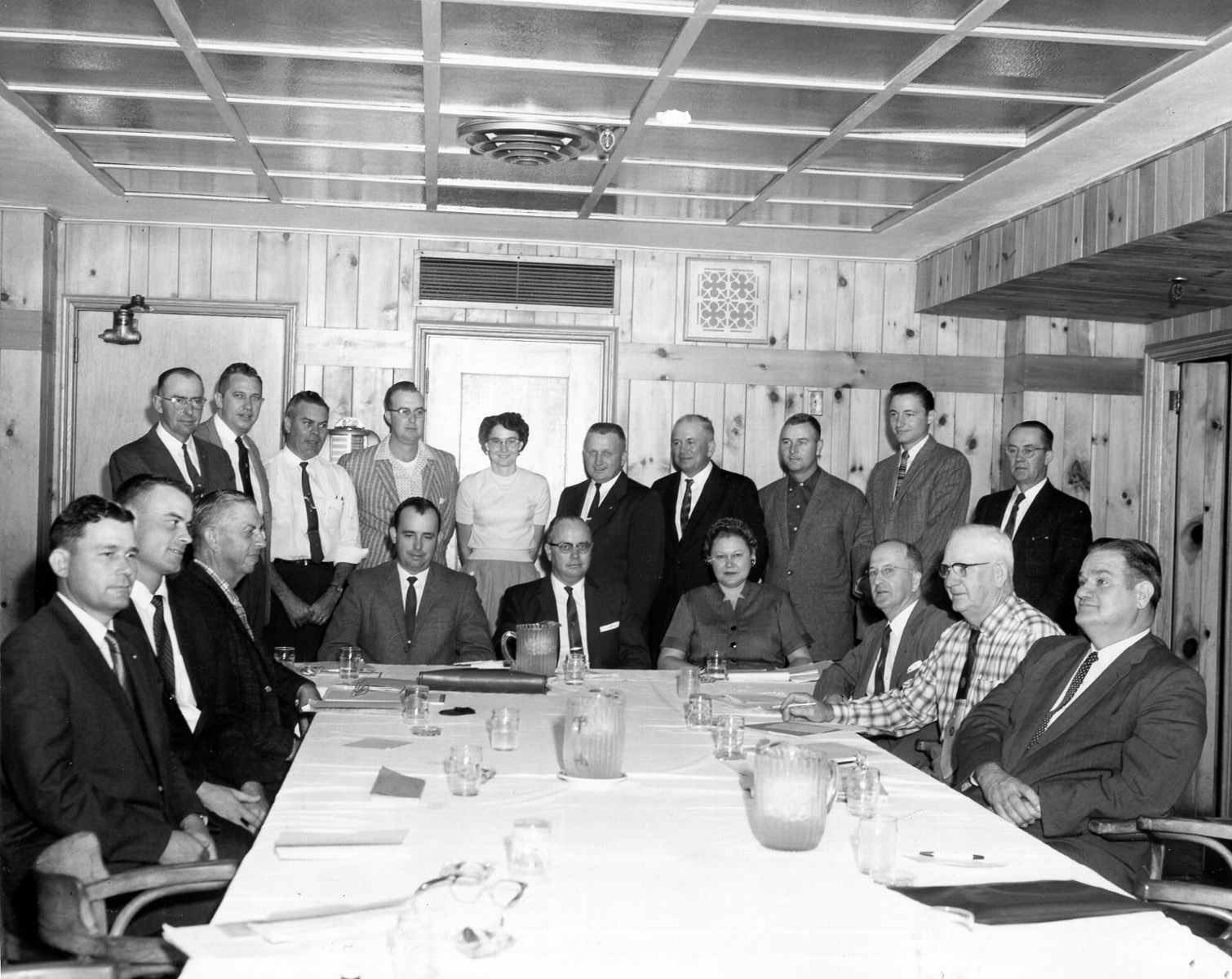
In 1958, insurance services were not readily available to rural Georgians, so GFB members voted to establish their own insurance company. The Georgia Farm Bureau Mutual Insurance Company (GFBMIC) began operations on Jan. 2, 1959. The GFBMIC is owned 100 percent by GFB policyholders and is the largest Georgia-based personal lines property casualty insurance company.
County Farm Bureau offices began opening at this time with two paid employees - a secretary and insurance agent. Today, GFB has 158 county offices. Each county office is affiliated with GFB but operates under its own autonomy and is governed by a local board of directors.
In addition to offering a variety of home, auto, farm, life and health insurance products to our members, GFB members also have access to more than 300,000 services, benefits and discounts for travel, family entertainment, farm equipment and select Ford vehicles and many more local discounts through the Savings Plus app.
“Georgia Farm Bureau is a local organization. Our county Farm Bureau chapters are operated by and staffed by local folks who care about their communities,” said McCall. “Our county chapters serve the Farm Bureau members in their county so well because they live in the same communities as our members, go to church with them, and see them at local school and sporting events.
To learn more about Farm Bureau, contact your county Farm Bureau office or visit www.gfb.ag/join to join.
GFB Leadership History
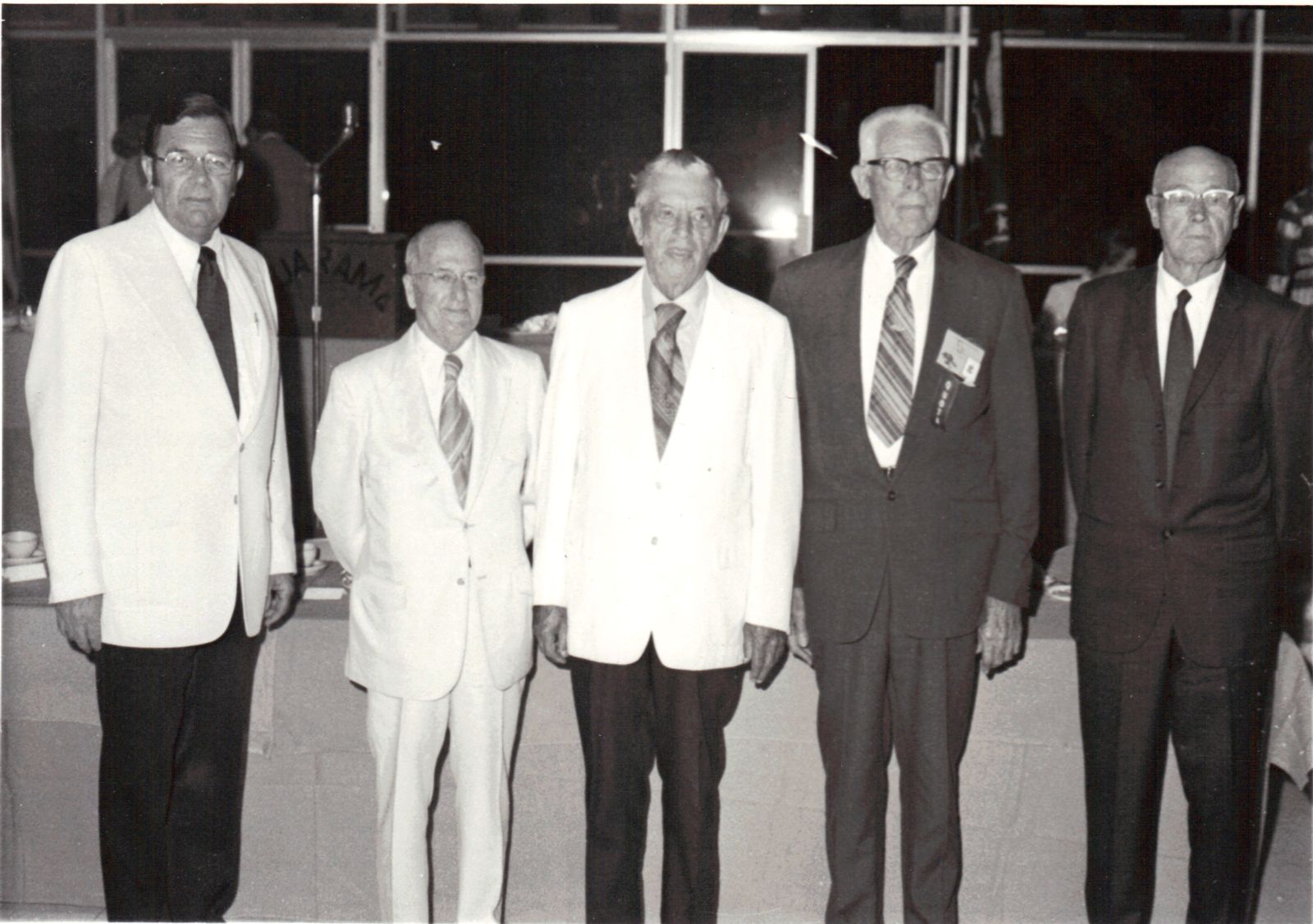
Every two years, voting delegates at the GFB annual convention elect their GFB president.
In the past 85 years, 13 presidents – elected by the GFB voting delegates, who are farmers, - have led GFB: Robert L. Stiles (1937-1941) of Bartow County; Harry L. Wingate (1941-1957) of Mitchell County; John P. Duncan Jr. (1957- 1961) of Brooks County; Harry L. Brown (1961-1964) of Rabun County; William L. Lanier (1964-1970) of Candler County; W.J. McKemie (1970) of Clay County; H. Emmett Reynolds (1970- 1978) of Crisp County; Robert “Bob” L. Nash (1978-1988) of Upson County; T.M. “Mort” Ewing (1988-1994) of Newton County; Wayne Dollar (1994-2006) of Thomas County; Vincent “Zippy” Duvall (2006-2016) of Greene County; Gerald Long (2016-2020) of Decatur County and Tom McCall (2020-present) of Elbert County. All but Ewing, Duvall, Long and McCall are deceased.
In January 2016, the voting delegates at the American Farm Bureau Federation convention elected Zippy Duvall as the AFBF president. Duvall is the first Georgian to serve as AFBF president. Mort Ewing served as an AFBF vice president from January 1994 through December 1994 while also serving as GFB president.
Numerous GFB presidents have served on the AFBF Board of Directors during their terms as GFB president to represent AFBF’s southern region including: H.L. Wingate; Harry L. Brown; H. Emmett Reynolds; Robert Nash; Wayne Dollar; Zippy Duvall, Gerald Long and Tom McCall. The following GFB young farmer members served one-year terms on the AFBF Board while chairing the AFBF YF&R Committee: Duvall in 1987; Ben Boyd in 2005; and Jake Carter in 2014.
GFB also has a state board of directors, which consists of two directors, elected by voting delegates from each of GFB’s 10 districts, and three regional vice presidents, elected by delegates from each region. District directors serve two-year terms. Regional vice-presidents serve three-year terms. Each year at the GFB convention, voting delegates designate one of the regional vice presidents to serve as first vice president. GFB bylaws state only active farmers may hold these elected positions.
The state Women’s Leadership and Young Farmer & Rancher Committee chairmen, who are nominated by their fellow committee members and elected by the GFB directors, serve on the GFB Board while chairing their respective committees. These positions must also be held by active farmer members.
The GFB Board of Directors also includes the organization’s corporate officers: GFB’s general counsel, chief financial officer & corporate treasurer; chief administrative officer; corporate secretary and senior counsel, and assistant corporate treasurer. The GFB Board elects these four positions.
“Georgia Farm Bureau has been blessed to have had dedicated and visionary leaders who have led our organization from a group of 50 farmers in the 1930s to becoming the state’s largest farm organization that we are today advocating for agriculture to benefit farmers and consumers,” said GFB President Tom McCall. “I’m humbled to follow in the footsteps of the presidents who have served before me. We are indebted to them and the many men and women who have served in leadership positions on our state board and county boards through the years.”
Visit www.gfb.ag/directors37to2022 for a list of everyone who has served on the GFB Board of Directors from 1937 through the present time.
Supporting Ag Literacy & Building Future Leaders
Georgia Farm Bureau originally founded the Georgia Foundation for Agriculture (GFA) in 2014 under the name Georgia Farm Bureau Foundation for Agriculture. As the foundation evolved in its first years, so did its mission. The GFB Foundation for Agriculture was founded with the primary objective of advancing Georgia agriculture and creating healthy communities. Under its new name, the Georgia Foundation for Agriculture is investing in the next generation of agricultural leaders through numerous programs that will deepen the foundation’s impact on Georgia’s agricultural community.
The GFA is planting seeds of inspiration for elementary students through agricultural based science, technology, engineering and math (STEM) curriculum and a state of the art mobile classroom, The Georgia Ag Experience, that started traveling to schools and community events across Georgia in January 2020. The GFA also coordinates a bi-annual STEM Challenge for third through fifth graders that encourages students to explore a different aspect of agriculture using their STEM skills.
Since 2016, the foundation has annually distributed a children’s book that accurately portrays agriculture to Georgia’s approximately 400 public libraries. Georgia EMC has partnered with the foundation on this project since 2018. The foundation is grateful to all of the county Farm Bureau staff and volunteers who have delivered the books annually to their local libraries.
Since 2016, the foundation has offered scholarships for graduating high school seniors, rising college juniors and seniors, and technical college students who are pursuing a degree in an ag-related field or home economics at a school in the University of Georgia system, Berry College or Emanuel College. There are also scholarships for UGA College of Veterinary Medicine students specializing in farm animals.
The GFA is also working to provide mental health support to Georgia farmers and rural communities.
To learn more about the foundation, visit www.gafoundationag.org .
Information in this article came from “A History of Georgia Farm Bureau 1937-1987,” published by GFB in December 1987, and archived issues of the Georgia Farm Bureau News.